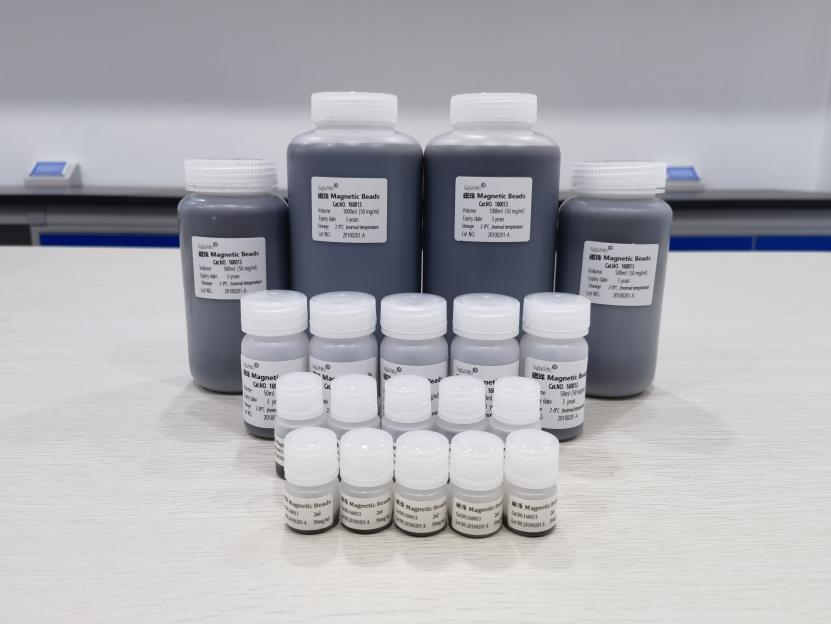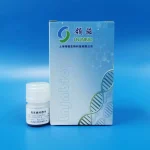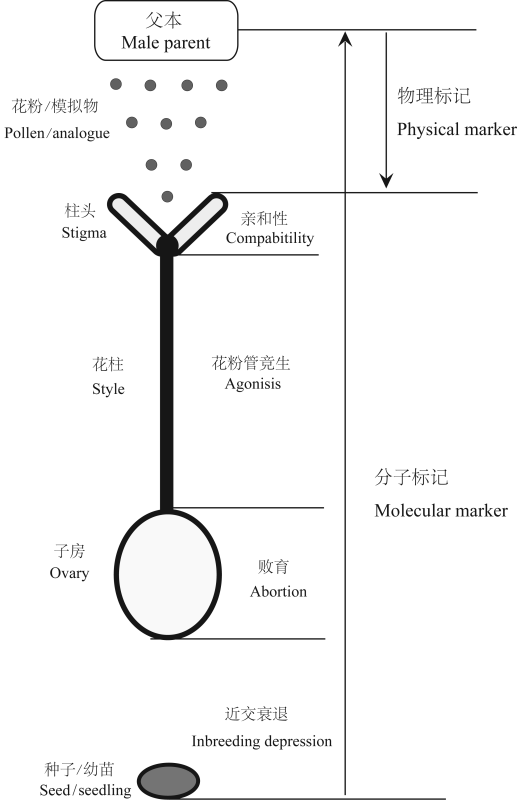Professional Manufacturer of Biomagnetic Beads

Optimize POCT with LnjnBio Magnetic Beads 160013
Foreword
POCT, commonly translated as “point-of-care testing” or “instant testing,” is defined as rapid medical testing conducted near or at the patient’s site without relying on a central laboratory. Let’s delve into the application of magnetic bead-based nucleic acid extraction in the POCT field, with a specific focus on the application of Shanghai Lingjun Biotechnology’s 160013 magnetic beads in POCT.
Unlike traditional testing, which requires sending samples to a laboratory and waiting several hours or even days for results, POCT emphasizes “speed” and “on-site” testing, typically delivering results within minutes to just over ten minutes. This enables immediate clinical decision-making for diagnosis and treatment.
1.Introduction to Magnetic Bead-Based Nucleic Acid Extraction and Its Core Advantages in POCT
The principle of magnetic bead-based nucleic acid extraction involves using surface-modified superparamagnetic micro-nano beads (magnetic beads) that bind to nucleic acids through electrostatic and hydrophobic interactions in specific buffer environments.
Under an external magnetic field, the magnetic bead-nucleic acid complexes are adsorbed and separated from other impurities in the solution (such as proteins, cellular debris, PCR inhibitors, etc.). After washing, the nucleic acids are eluted, yielding high-purity nucleic acids.
When applied to POCT scenarios, this method offers unparalleled advantages over traditional centrifugation column or phenol-chloroform extraction methods:
- Automation and Integration: The movement of magnetic beads is controlled by a magnetic field, eliminating the need for centrifugation steps. This makes it easy to integrate with microfluidic chips and precision-molded chambers, enabling full automation and closed operation of the entire process—from sample loading, lysis, binding, washing, to elution. This is central to POCT device design.
- Speed and Efficiency: The entire process is typically completed within minutes to just over ten minutes, far exceeding traditional methods and meeting the POCT requirement for rapid results.
- Simplicity and Minimal Training: Users only need to add the sample, and subsequent steps are automatically performed by the instrument. This significantly reduces the skill requirements for operators, making it suitable for use in primary clinics, community hospitals, and even households.
- High Safety: The entire process is conducted in a sealed or semi-sealed system, reducing the risk of aerosol generation and biological contamination, thereby protecting operators and the environment.
- High Purity and Yield: High-quality magnetic beads effectively remove various inhibitors from complex samples (e.g., blood, sputum, nasal swabs), providing high-quality templates for downstream qPCR, LAMP, CRISPR, and other nucleic acid detection methods. This ensures the accuracy and sensitivity of test results.

2. Key Characteristics of Shanghai Lingjun Biotechnology’s 160013 Magnetic Beads in POCT Applications
Shanghai Lingjun Biotechnology is a well-known domestic supplier of magnetic nanomaterials. Its model 160013 magnetic beads are superparamagnetic silica beads specifically designed for nucleic acid extraction and purification.
Based on POCT application requirements, we can analyze several key characteristics of this model:
2.1 Superparamagnetism:
Characteristic: This means that when an external magnetic field is applied, the beads are rapidly magnetized and aggregated. When the magnetic field is removed, the magnetism immediately disappears, and the beads uniformly disperse back into the solution without residual magnetism.
POCT Application Value: This is the foundation for automated fluid control. Rapid magnetic responsiveness ensures efficient switching between binding, washing, and elution steps, shortening the total extraction time. Rapid redispersibility ensures thorough washing, avoiding nucleic acid loss or cross-contamination due to bead aggregation.
2.2 Uniform Particle Size and Monodispersity:
Characteristic: The 160013 magnetic beads have a relatively uniform particle size (typically in the range of 1-1.4 μm) and good dispersibility, minimizing aggregation.
POCT Application Value: Uniform size ensures consistency and reproducibility across extraction batches, which is critical for POCT devices to deliver stable and reliable results. Good monodispersity ensures full contact with nucleic acids, improving binding efficiency and yield.
2.3 High Binding Capacity and Efficiency:
Characteristic: The bead surface is optimized with silanol groups, enabling efficient adsorption of nucleic acids (DNA and RNA) in high-salt, low-pH binding buffers.
POCT Application Value: POCT samples are typically small (e.g., tens to 200 microliters), but sufficient nucleic acid must be extracted for high-sensitivity detection. High binding capacity means fewer beads can process more sample sources (e.g., samples with low viral titers) or yield higher nucleic acid concentrations under the same conditions, directly enhancing the sensitivity of downstream detection.
2.4 Excellent Resistance to Inhibitors:
Characteristic: Through surface treatment and process optimization, these beads effectively resist common inhibitors in clinical samples, such as hemoglobin, heparin, IgG, bile salts, and urea.
POCT Application Value: POCT deals with the most original sample types (e.g., direct swab lysates, uncentrifuged blood) with high inhibitor content. Strong anti-interference capability is key to ensuring nucleic acid purity, directly determining the success rate of subsequent nucleic acid detection and avoiding false-negative results.
2.5 Good Stability and Batch-to-Batch Consistency:
Characteristic: As a mature industrially produced product, the 160013 magnetic beads exhibit well-controlled quality stability across batches and are stable when stored at 4°C or room temperature.
POCT Application Value: For POCT kit manufacturers, batch-to-batch consistency of raw materials is crucial. Stable magnetic bead performance is the foundation for the reliable operation of devices and reagent systems.
Integrated POCT Nucleic Acid Extraction and Detection Solution (Using 160013 Magnetic Beads)
3.A POCT system integrated with 160013 magnetic beads may operate as follows:
- Lysis: The chip/chamber is pre-loaded with lysis buffer. Cells and viruses are lysed through heating or mechanical mixing, releasing nucleic acids.
- Binding: The pre-mixed 160013 magnetic beads in the lysis buffer bind to the released nucleic acids. The system automatically injects a binding buffer to create an optimal binding environment.
- Washing: The instrument controls the position of an internal magnet to adsorb the magnetic bead-nucleic acid complexes. Waste liquid is removed or pushed into a waste chamber. The magnet is then moved away, washing buffer is added and mixed, and the beads are re-adsorbed. This process is repeated 1-2 times to remove impurities.
- Elution: The beads are adsorbed, and a low-salt elution buffer (e.g., TE buffer or water) is added. Under heating conditions, nucleic acids are released from the beads.
- Transfer and Detection: The eluted pure nucleic acids are automatically transferred to the detection chamber of the chip, which is pre-loaded with freeze-dried qPCR/LAMP/CRISPR detection reagents. The instrument then initiates temperature control and optical detection to perform nucleic acid amplification, read fluorescence signals, and ultimately output diagnostic results.
Throughout this process, the 160013 magnetic beads, as the core solid-phase carriers, directly determine the efficiency of the extraction step and the quality of the nucleic acids, thereby ultimately impacting the accuracy, sensitivity, and reliability of the entire POCT test.
4.Conclusion
Magnetic bead-based nucleic acid extraction is a critical pre-analytical technology enabling POCT molecular diagnostics. Shanghai Lingjun Biotechnology’s 160013 nucleic acid extraction magnetic beads, with their superparamagnetism, high sensitivity, high purity, strong resistance to inhibitors, and excellent batch-to-batch consistency, are an ideal choice for POCT device and reagent developers.
By integrating such high-performance magnetic beads into microfluidic chips or automated cartridges, truly integrated “sample-in, result-out” POCT molecular diagnostic systems can be developed. These systems are widely applicable in rapid infectious disease testing (e.g., COVID-19, influenza, HPV, respiratory syncytial virus), companion diagnostics, on-site food safety testing, customs quarantine, and many other fields, greatly advancing the democratization and convenience of molecular diagnostic technologies.
Supplier
Shanghai Lingjun Biotechnology Co., Ltd. was established in 2016 which is a professional manufacturer of biomagnetic materials and nucleic acid extraction reagents.
We have rich experience in nucleic acid extraction and purification, protein purification, cell separation, chemiluminescence, and other technical fields.
Our products are widely used in many fields, such as medical testing, genetic testing, university research, genetic breeding, and so on. We not only provide products but also can undertake OEM, ODM, and other needs. If you have a related need, please feel free to contact us .






